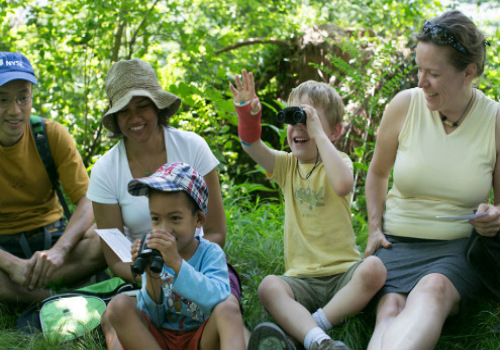Birding, or birdwatching, is the type of thing that you don’t really notice if you’re not aware of it; if you are, you see it everywhere—either in the form of birds roosting and passing through, or people pointing cameras with really big lenses skyward. Believe it or not, NYC is a fantastic place for birding, and birdwatching is a great activity to do with kids. And now, on the cusp of the annual spring migration, is a superb time to start. Read on for our guide to birding with kids in NYC—where to do it, when to do it, and who can help!
The NYC Family Guide to Birding: Where to Start
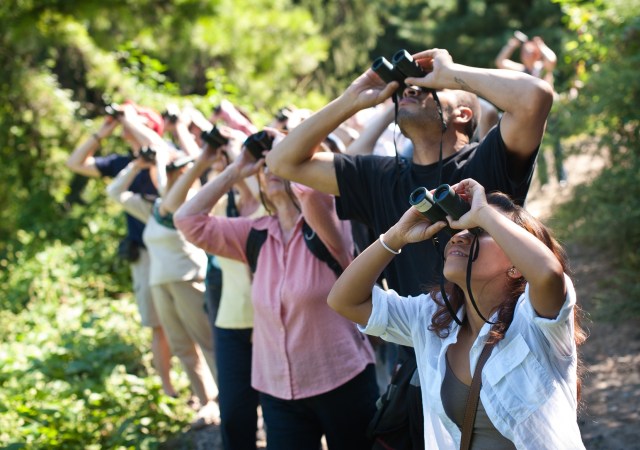
Birding is an excellent way to pass the time since it can really be done from anywhere. The activity gained a lot of new fans over the past year, as people slowed down and looked outside for things to do. (It's also relatively affordable.)
NYC is home to over 200 species of birds that visit regularly, while more than 200 more species of varying levels of rarity have been spotted by birders over the years. With so many types of birds to discover, where do you even start?
We reached out to Lily Lasovick of the NYC Audubon Society for some words of wisdom for budding birders. Her first bit of advice? "Go birding as often as you can! The best way to improve your bird identification skills is through practice."
Take that first step by just heading outside and observing. You might be surprised at how many more birds you spot than the omnipresent sparrow and pigeon. In this author's Brooklyn neighborhood, for instance, it's not uncommon to see vibrant red (and a duller brown female) cardinals, hear the plaintive meowing call of the bluejay, or watch a mockingbird bomb-dive an unlucky cat who wandered too far into the bird's domain.
Another aspect of bird watching that can help you get started is to become a part of the community. According to Lasovick, "if you see another birder or a group of people birding, do not be afraid to go up to them and ask what they are looking at or what they have seen. Birders are friendly people and like to share their knowledge of birds. Learning from others is another great way to improve your birding skills."
Supplies List: What You'll Need for an Enhanced Birding Experience
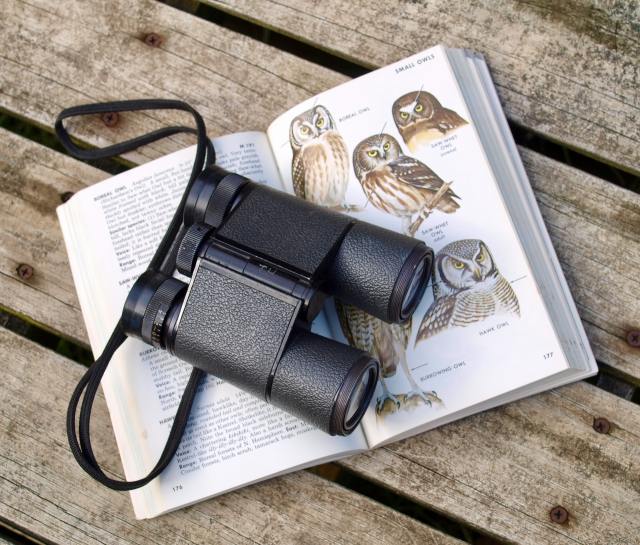
To go bird watching, all you really need are your eyes and ears! You don't need any special equipment at all to enjoy birding. However, if you want to support your birding with some add-ons, consider these options:
- Binoculars: To bring the tree-tops a little closer to you, a good pair of binoculars at a magnification of x8 or x10 can definitely be helpful. However, if you're birding with kids, binoculars may be more distracting than useful, says Audubon's Lasovick. "Binoculars are great, but definitely not necessary for birding, especially with young children. Young children tend to have difficulty using them and instead of looking or listening for birds, they get preoccupied or frustrated with the binoculars. Instead, I would focus on looking and listening to their surroundings using just their eyes and ears."
- A field guide to Eastern North American or NYC Birds: To help you and your kids identify the birds you spot, you might want to pick up a field guide for the birds of your area. A good guide has colorful illustrations or photos of the birds and descriptions (or recordings!) of bird calls. Your field guide can take the form of a book like "The Sibley Field Guide to Birds of Eastern North America." Or, you can install an app like eBird or Merlin for a more portable and even social option. Lasovic notes that having a bird field guide "allows you to show [kids] close-up pictures of the birds they are seeing and provides an opportunity to discuss field marks."
- Migration charts: Migration charts note when you're likely to find a certain type of bird. The NYC Audubon Society has an NYC bird migration chart that doubles as a checklist (more on this in a moment) and includes information from the time of year to how common or uncommon sightings are.
- A checklist or "life list": Most birders keep a list of the birds they've seen, noting the type of bird they saw, as well as where and when they saw it. Checklists can help teach kids how to take good notes and look for patterns. Keeping a list is a great way to gamify the experience for kids — after all, who doesn't want to "catch 'em all"?
Birding 101: When, How, and Where to Birdwatch in NYC
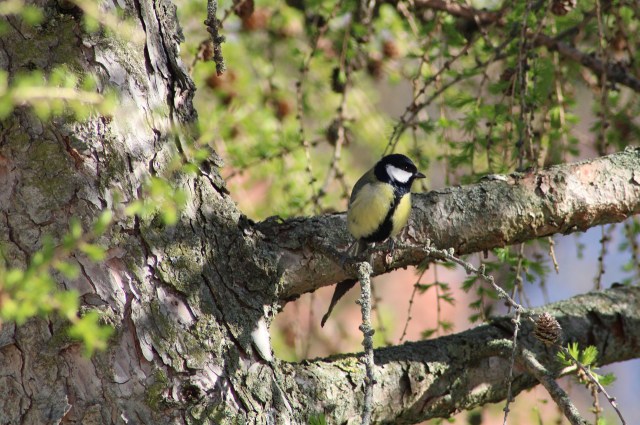
Once you've familiarized yourself with your local birds, you can become more involved in your birding adventure and learn how to optimize the experience or even find specific birds. Become familiar with when, where, and how to bird-watch:
When to Birdwatch?
Consider these factors when choosing when to go out birding:
- Time of day: Birds are most active in the early morning and late afternoon, so those are the best times of day to head out for a stroll.
- Weather: No one likes being outside in terrible weather, not even birds. During very hot, very cold, and stormy days, birds tend to stick close to shelter. If it's a nice day for a leisurely walk, it's probably a nice day to bird-watch, too!
- Time of year: While some birds live in NYC all year round, we do see many migrating birds arrive in the spring. Spring is also a good time to see young birds and nesting behaviors. Other birds, on the other hand, pass by during their fall migration and can be only briefly spotted in early or late fall. Having a migration chart will help you know what kinds of birds to look for in different seasons.
How to Birdwatch?
There are a few safety and etiquette rules you should be aware of when you begin bird watching, especially if you're birding with children. The NYC Parks birding guide recommends following their guide to safe birding:
- Watch birds from a distance
- Don't stress out the birds, even if it means you won't get the best photo op
- Don't stray from park trails and paths, to avoid damaging the birds' habitat
The Audubon Society has some additional notes to remember:
- It's illegal to take nests, eggs, and even feathers
- Don't "adopt" birds, even if you think you're helping - often, baby birds found outside their nests are fledglings who aren't in any danger and their mother is nearby
Where to bird-watch?
While anywhere is a good place to find birds, there are a few noteworthy spots around NYC with some excellent birding opportunities. We'll go into them in more depth below!
Where to Birdwatch with Kids in NYC
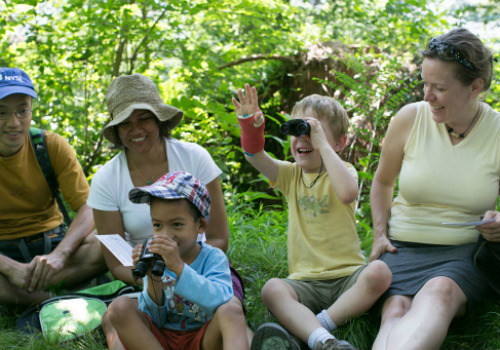
Go local
"Do not underestimate what birds you can find in your local park," says Lasovic, especially during fall and spring migration!" Your local park or even just your neighborhood can be a treasure trove of fowl friends. Find links to birding resources at these parks below.
Visit NYC parks
Once you've gotten to know your local birds, you can expand your birding territory to the bigger NYC parks, all of which provide excellent opportunities to spot new birds. "Venturing to larger parks like Central Park, Van Cortlandt Park, and Prospect Park provide the opportunity to see a greater variety of birds," notes Lasovic. "I recommend doing this after becoming familiar with the more common birds such as House Sparrows, European Starlings, and American Robins."
If you just want to grow your checklist, you might want to head out to parks that are known to house many different types of birds. For example:
- Central Park (Manhattan): NYC's iconic Central Park sees over 210 different birds every year, from wading birds like Blue Herons and Great Egrets in the park's ponds, to songbirds like warblers and different types of sparrows and finches in the ramble. The Central Park website has a guide to birding within the park, including a list of the most popular bird-watching spots.
- Pelham Bay Park (Bronx): Pelham Bay Park is a popular destination for birds in mid-migration. It's also an excellent place to spot birds not as common in other parts of NYC, like Baltimore and Orchard Orioles. In the spring, the park is an excellent time to spot nesting Yellow Warblers and hear other types of warblers. You can even find a few types of owls in this park!
- Great Kills Park (Staten Island): The mudflats, beaches, marshes, and woodlands of Great Kills Park make it a great place to find a variety of birds, from songbirds to raptors like Ospreys
- Prospect Park (Brooklyn): Within the wooded areas of Prospect Park, you can spot smaller birds like warblers, vireos, and songbirds. Check out the many types of waterfowl, as well, from the common Mallard Duck and Mute Swan to the lesser-known Wood Duck, American Coot, and many more. Nearby Green-wood Cemetery is also a very popular spot for birders, with more than 185 species of migratory birds stopping over each year. Go on your own, or check out Green-wood's Birding in Peace walks.
- Jamaica Bay Wildlife Refuge Center (Queens): This bird and wildlife sanctuary boasts over 12,600 acres of varied terrain, from beaches and marshes to freshwater and brackish water ponds. It's one of the largest bird habitats in the northeastern US! Stop by for a hike and to watch and listen to the many different types of birds that make their homes in the different biomes of the sanctuary. Be on the lookout for osprey nests and young ospreys in the spring!
You can find even more information about birding in NYC's biggest parks by consulting the NYC parks guide to birding, which lists some of the city's most popular parks and their birding attractions.
You can also download Audubon's guide to "birding by subway," which maps out the best places to visit for birders, all accessible by train.
Seek out specific birds:
Are you looking for a specific bird to add to your life list? Tweet @NYCParks with your question to get some guidance! The Audubon Society's checklists and resources can also be a big help here.
Bring the Birds To You!
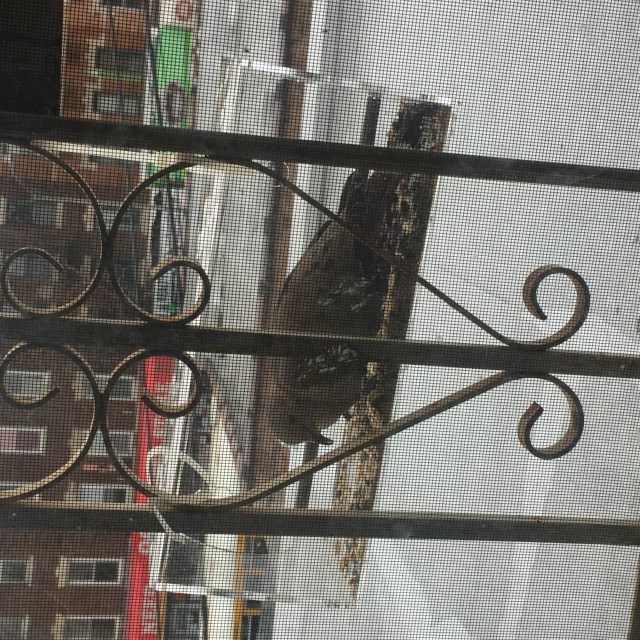
Want to continue your birding adventure at home? You can bring the birds to you by setting up a standing or hanging bird feeder in your backyard, or setting up a clear feeder at your window. It might take the birds some time to find the new feeder, but once they do you'll be able to enjoy watching birds from your own home!
How to Make Bird Watching Educational and Fun for Kids
Birding can be very fun on its own, but you can make it even more fun — and educational! — for kids with the following tips:
- Make each bird-watching trip into a quest! For example, you can play bird bingo or challenge your kids to find three different kinds of birds on your walk. The Cornell Ornithology website has these and many other ideas to check out.
- Encourage your kids to keep an explorer's notebook where they can write about or draw the birds and nature you come across. For a more guided experience, Cornell has an explorer's guidebook you can purchase and follow along with.
- Turn each walk into a learning experience with Cornell's K-12 resources, which includes downloadables and free lesson plans, along with additional teaching material for purchase.
- Can't go outside today? You can still bird-watch! Tune in to a live bird cam and watch the birds as you go about your day. You can view birds from North Eastern US, or tune in to a different part of the world for a completely new experience!
- For a more guided experience, NYC Parks hosts birding walks with the Urban Rangers throughout the year, guiding families to the best birding spots and teaching about the different types of birds you see along the way. You can also go birding in the Bronx at Wave Hill, where birdwatching outings are held in all seasons.
• Prospect Park is home to the Prospect Park Audubon Center, which in non-pandemic times hosts bird-related programming; the center has also loaned out Discovery packs with binoculars, a magnifying glass and journal for visitors to use.
- Finally, you can keep up to date with what the local birdies are up to by following some active Twitter accounts for your borough, like @BirdsBrooklyn and @BirdBrklyn for Brooklyn dwellers.
—Yuliya Geikhman
RELATED STORIES:
Fresh Air Fun: The Best Spring Day Trips From NYC For Kids
Fresh Air Fun: Kid-Friendly Hikes Near NYC
Cream of the Crops: Kid-Friendly Farms Near NYC
